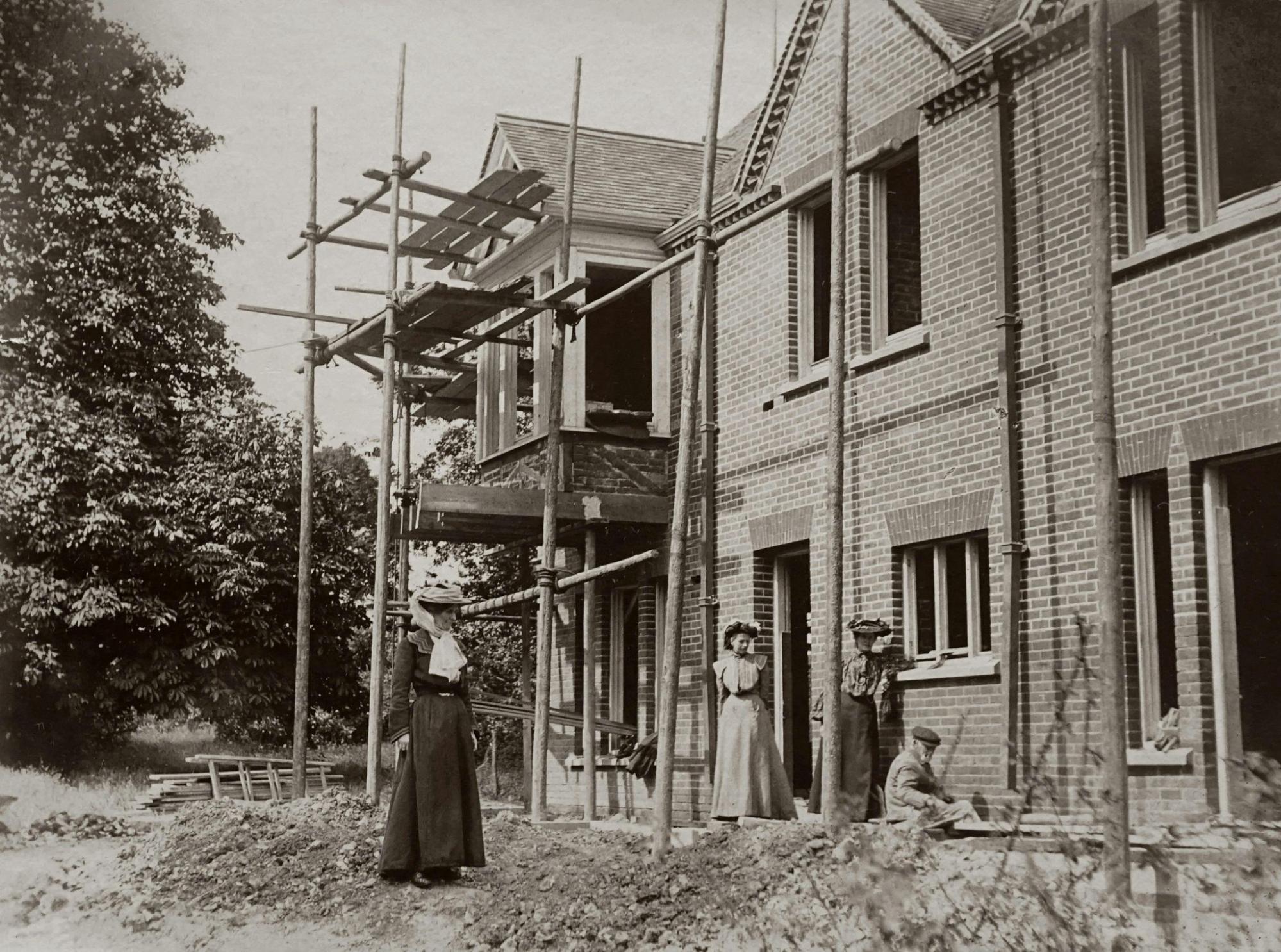There’s no shortage of Edwardian properties on the market. If you’ve recently purchased an Edwardian period property in need of renovation, we have some style tips to share with you. We’re also sharing our favourite Edwardian radiators to help complete the look.
The Edwardian period was a transitional time that marked the first decade of the 20th Century. Named after Queen Victoria’s son Edward II, this period lasted a short time from 1901 to 1910.
It was a period defined by modernisation, as the country said goodbye to the traditions of the Victorian era. Cities were fast expanding and this led to a flurry of development in prominent suburbs.
While tall and narrow Victorian terraces were commonplace, the Edwardian property found space to spread out. These homes typically have a larger footprint, with more spacious rooms and grand entrance ways. Glass was becoming more affordable, so windows were larger and more ornate.

The occupants were middle class families who did not have the funds for servants, so there was no need for basement kitchens and attic bedrooms. The result is shorter properties, usually set over two or three floors. These families also wanted privacy and distance from their neighbours, so the front garden became a common feature.

Perhaps the most iconic examples of this style can be found in the leafy suburbs of London including Dulwich, Hampstead and Blackheath. English architect Sir Edwin Lutyens was busy designing homes and central buildings for the capital during this time and he has firmly left his mark on the region.
Edwardian properties are built for living, which is good news for growing families looking for space to spread out. These properties are over 100 years old, so you can expect to have some restoration ahead of you.
If you’ve recently purchased an Edwardian property and are looking for design inspiration to help guide your choices, read on to learn more about the Edwardian design features we adore.
While the home might lack the basement and attic space of Victorian properties, you won’t be short on space. Edwardian properties have a larger footprint, with sprawling rooms and high ceilings.
One of our favourite design features of Edwardian properties is the grand entrance way. It’s common to see wide hallways and staircases which can become a focal point in your design.
Like Victorian homes, tiles are commonplace in the entranceway, which is a low maintenance choice for a busy household. Whether you can restore the original tiles or replace them with sympathetic replicas will all depend on the condition of your home.
The move from coal burning fireplaces to cast iron radiators and central heating had a huge impact on interior design. Fireplaces in Edwardian homes are less dominant, so you don’t have to make this the focal point of the room.
If you’re looking to replace original radiators, or if a previous owner has installed modern radiators, we can help you to find the perfect vintage style radiators for your home. Edwardian style radiators will transform the space and provide ample heat for the large rooms, keeping you toasty throughout the colder months.
The most popular Edwardian radiators for your home include the four column radiator or the two column school radiators. When it comes to colour choices, matt black and cream white are the most popular paint finishes for Edwardian homes.
As mentioned above, the Edwardian period was a time of the expanding middle class. Industrialisation was also making things that were once expensive and unaffordable more accessible to more people.
One characteristic of Edwardian homes that we adore is the larger windows. Glazing became cheaper, and larger panes of glass were more accessible. It’s also common to see stained glass feature panels which cast streaks of colour around the room when the sunlight hits them.
Restoring original windows or faithfully reproducing these features will help to retain the charm and the value, so it’s certainly worthwhile doing.
The Art Nouveau movement was popular during the Edwardian period, so you might consider introducing muted colour tones and swirling floral motifs into your design choices.
Art Nouveau is one that is often difficult to replicate because it relies so heavily on architectural features, but your Edwardian property may have the ornate decorative features that are characteristic of this style.
The larger rooms that are characteristic of Edwardian properties lend themselves to entertaining. If you’re fond of hosting friends and family, the Edwardian property will give you the space you need.

Many Edwardian properties will have been extended with lean-to extensions on the rear, creating large kitchen diner spaces that are perfect for entertaining. This is the ideal place to mix traditional with modern, as the extension can bring modern architectural features into your home.
It’s often the smaller details that make an Edwardian property truly unique and special. You might not spot these at first glance, but living in the property will reveal practical and stylish design features that are perfectly matched to modern life.
Bay windows will create the perfect space for a built-in window bench, while ripping up flooring might reveal original parquet flooring that is ready for restoration. It pays to take your time with an Edwardian property and faithfully restore the features that might need a little TLC.
If you’re looking for door hardware for your home, our sister company Vintage Door Knobs can help. You’ll find Edwardian home hardware that will lend a touch of authenticity to your home.
Join our mailing list
1 5% discount on orders over £2,000 before delivery & VAT
2 Ten year guarantee on all radiators excluding clearance



